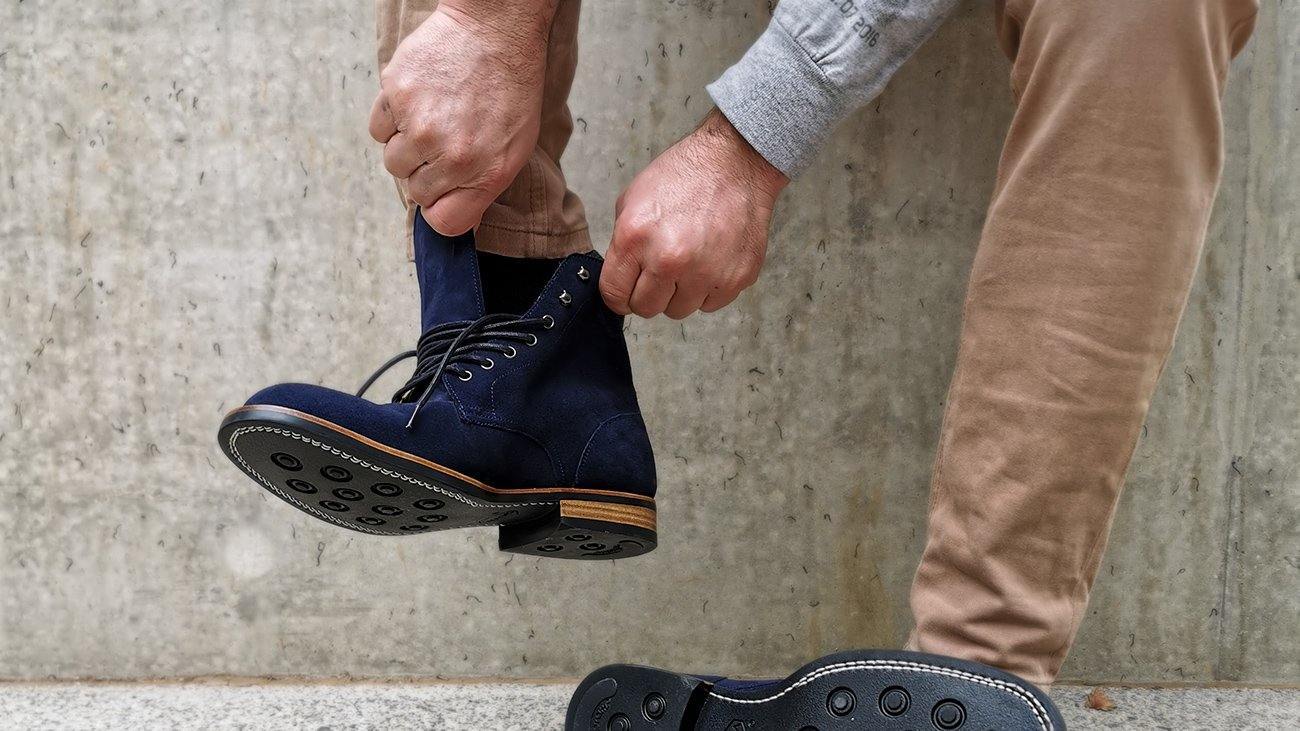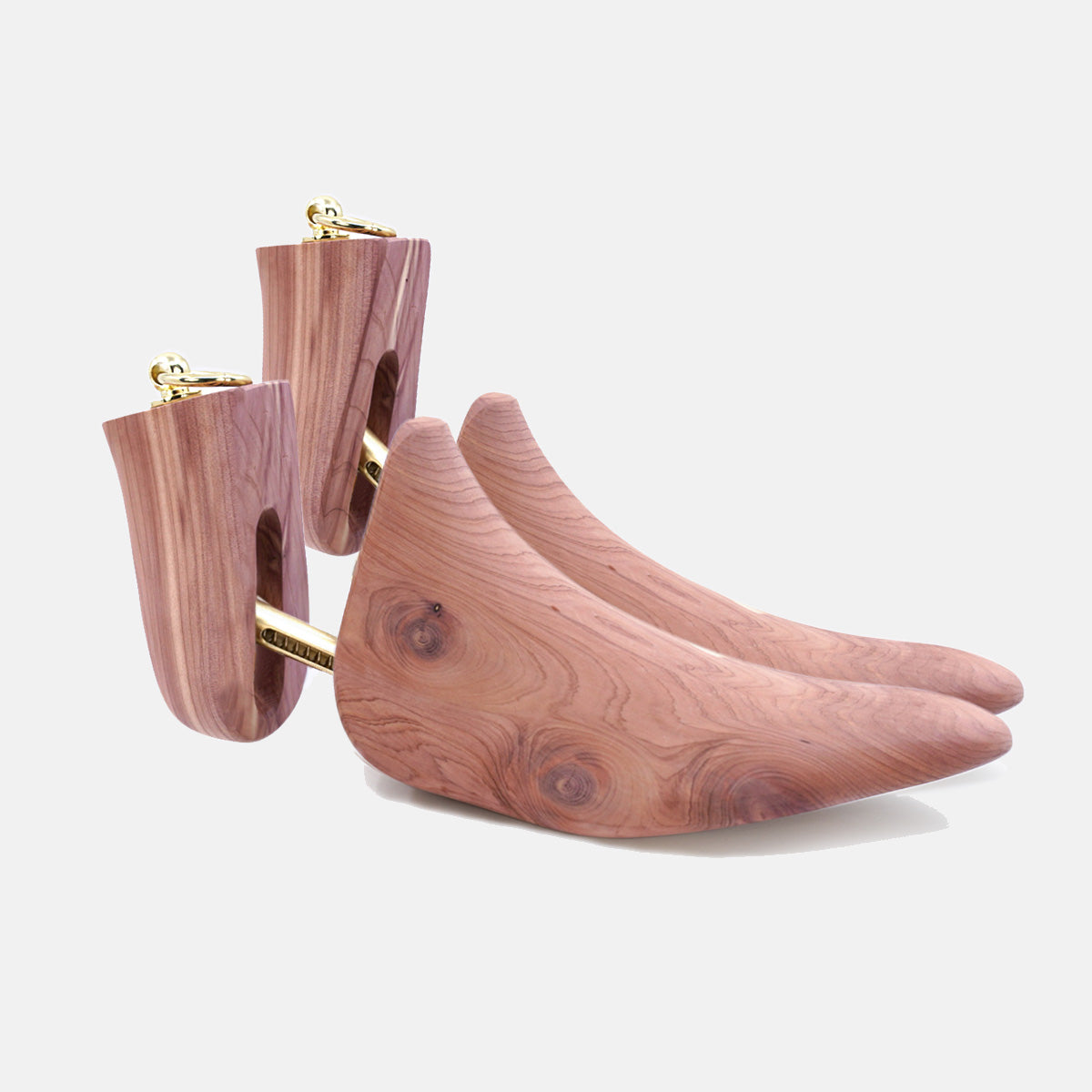Get 10% Off - Auto Applied At Checkout
Get 10% Off - Auto Applied At Checkout
Shoe Trees
shoe stretchers
Sets

What are the most comfortable mens boots?
May 22, 2023 5 min read
By Sean Leonard & James Seaford
Comfort is one of the main things we consider when buying mens boots. The myth is that a new pair takes time to ‘wear in’, but there are ways of acquiring a snug and durable fit from the get-go with a little know-how.
Search the term ‘most comfortable boots’ via the web and you will unearth a mass of contrasting information - a mix of truth and sales jargon - leaving you more confused than when you started. Well, here we’re going to help make that next boot purchase a little easier - by simply sticking to the facts.

Let's define what 'comfort' is
The word 'comfort' is a lot more complex than you might think when referring to footwear. According to Prof. Lubos Hes, author of Thermal comfort properties of textile fabrics in wet state, "Comfort is defined as the absence of perceived pain and discomfort".
Boots, in particular, are used for a myriad of daily and incidental activities which in turn increase the risk of pain and discomfort - from a long day at work to a laidback jaunt about town. With this in mind, the secret to true comfort lies in a boot’s composition, how well it has been designed and whether or not it is fit for purpose.
Therefore, a more accurate question when searching for the best boots online would be:
"What makes men's boots comfortable?"
Good range of motion between the foot and the ankle
You will have heard people talking about the level of protection boots offer your ankles; the perfect safeguard to a nasty twist or sprain. The truth is there is very little evidence to support this claim. [1]
If anything, studies have shown that when the motion between your foot and ankle is restricted too much, it can lead to unnecessary pressure on the knees, early-onset stress fractures, and friction. In other words - lots of discomfort. [2]
However, some level of ankle support appears to be better than none for all-round boot comfort. When coal miners were asked to compare a pair of lace-up boots and gumboots they unanimously voted for the former, mainly due to good support and a better fit. [3]
The weight of a boot
There is nothing more satisfying than kicking off your clogs after a long day at work. However, if you're feeling fatigued or a bit weighty in the legs by midday, it may be that your boots are too heavy and therefore not best suited.
Studies that have looked at the relationship between boots and fatigue tell us that weight plays a major role. People who wear heavier boots alter their natural posture when walking, using up more energy and oxygen in the process whilst tiring those all-important leg muscles. An increase of only 500 grams in footwear can have a big impact on localised fatigue, especially if you’re constantly on the move. [4]
Components like heftier leather insoles and midsoles, cork filler, stacked leather heels, and thicker leather uppers will affect the weight of the boot. Many welted boots have these components and they are generally heavier and stiffer than cheaper cemented boots, but when you break them in, the fit and longevity of the boots more than make up for the added (and acceptable) weight.
Boots that are flexible.. but not too flexible
The construct of a sole and the materials used will affect the flexibility and comfort of a boot or shoe. Ask anyone who has had to break in a pair of Goodyear welted shoes, only to find years of comfort wearing them. The reverse is true with cemented footwear: rubber soles that feel cushioned at first but quickly get flattened like pancakes, despite dubious claims around foam "memory" etc.
What we know about flexibility is that it's a bit of a double-edged sword. On one hand, research tells us that boots with flexible soles can increase stamina by reducing oxygen consumption - and therefore carbon dioxide production. [5]
On the other hand, it appears that reducing the rigidity of a sole too much will increase the risk of metatarsal stress fractures. [6] Often, the wearer will not even notice any physical issues until the damage has been done.
Good Breathability
Most synthetic shoe materials have poor air and moisture permeability, meaning hot air and sweat can’t escape. Case, point; a work shoe product that was returned over 500 times was found to be a result of wearer discomfort caused by moisture build-up. The shoe's polyether lining and foam-based insole trapped perspiration that led to a build-up of moisture - and ultimately discomfort. [7]
Using real leather materials such as full leather lining and cork offer a lot more breathability and comfort than commonly used synthetics. Water permeable materials like Gore-Tex have been an exception to the rule and something of a major breakthrough for outdoor gear.
The right fit
Finding the right fit might be one of the oldest clichés when it comes to footwear, but rarely do we get the sense of what a good boot fit is from the off. Finding the best work boots is a testament to this.
For example, the U.S Army reduced the number of soldiers experiencing discomfort by training their store men how to fit boots properly. It was observed that servicemen selected sizes as they would a dress shoe. A snug fit may have been nice for a pair of brogues, but the problem was, as soon as the servicemen did any physical activity or carried anything of weight, their feet would swell and their 'snug' boots quickly became too tight.
Studies have found that between 63-72% of people wear shoes that don't adequately accommodate the width or length of their feet. There is also evidence that tells us that incorrect footwear fitting is associated with foot pain and foot disorders such as lesser toe deformity, corns and calluses. [8]
Each foot is made up of 26 bones, 30 joints and over 100 muscles and tendons. Many factors will impact the comfort of the boots you purchase - and mens shoes in general. We hope you've gotten something out of this blog and are a little wiser to questionable online information around 'boot comfort'.
References
[1] Handoll et. al., 2001, Intervention for preventing the early onset of ankle ligament injuries; Barrett et. al., 1993, High- versus low-top shoes for the prevention of ankle sprains in basketball players. A prospective randomized study; Fong, D.T.P. et. al., 2009, Understanding acute ankle ligamentous sprain injury in sports; Millgrom, C., 1991, Risk factors for lateral ankle sprain: a prospective study among military recruits.return to text
[2] Whittle, M.W., 2007, Chapter 3 - Pathological and other abnormal gait, in Gait Analysis: An Introduction (4th Edition);
Böhm, H. et. al, 2010, Effect of boot shaft stiffness on stability joint energy and muscular co-contraction during walking on uneven surface.
[3] Dodson, J. et. al., 2020, Effect of work boot type on work footwear habits, lower limb pain and perceptions of work boot fit and comfort in underground coal miners.
[4] Dodson, J. et. al., 2020 Ibid; Majumber, D. et. al., 2006, Temporal spatial parameters of gait with barefoot, bathroom slippers and military boots; Garner, J., 2013, The influence of firefighter boot type on balance.
[5] Chiou, S., et. al., 2012, Effect of Boot Weight and Sole Flexibility on Gait and Physiological Responses of Firefighters in Stepping Over Obstacles.
[6] Arndt, A., 2003, A comparison of external plantar loading and in vivo local metatarsal deformation wearing two different military boots.
[7] Bitlisi, B. O., et. al., 2005, Importance of using genuine leather in shoe production in terms of foot comfort.
[8] Bundt. A. K. & Menz, H.P., 2018, Incorrectly fitted footwear, foot pain and foot disorders: a systematic search and narrative review of the literature.
Leave a comment
Comments will be approved before showing up.
Subscribe
Sign up to get the latest on sales, new releases and more …











